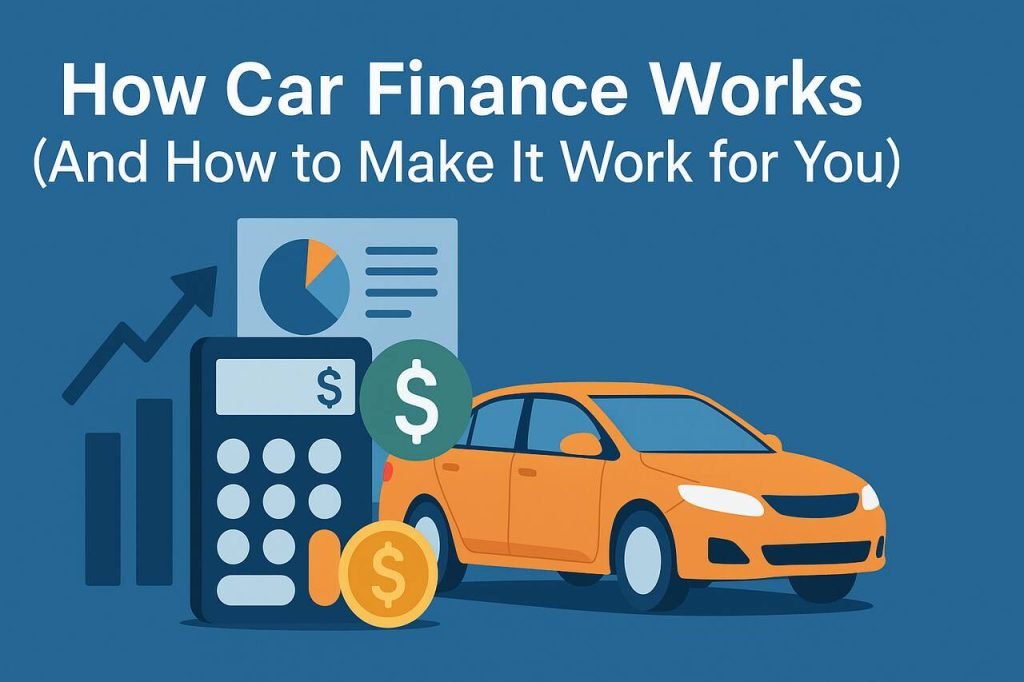Buying a car is exciting. But when it comes to how you’ll actually pay for it, things can get a bit confusing. Car finance sounds straightforward until you start digging into all the jargon, the options, and the fine print. Suddenly, it feels like you’re in a maze of numbers and contracts.
So, let’s clear things up.
Whether you’re planning to get your first car, upgrading to something newer, or just exploring smarter ways to manage your money, understanding how car finance works can help you make the most of it.
What Exactly Is Car Finance?
Put simply, car finance is a way to spread the cost of a car over time. Rather than paying one large upfront amount, you agree to smaller, regular payments for a set period. It allows you to get behind the wheel without needing to hand over thousands of dollars straight away.
There are a few different types of car finance, and the one that suits you will depend on your budget, your plans, and how long you want to keep the car.
The Common Options (And What They Really Mean)
Car finance usually falls into one of three main categories:
- Loan (or Personal Loan)
This is a straightforward one. You borrow a lump sum from a lender, buy the car outright, and then repay the loan in instalments over an agreed period. You own the car from day one. This option usually suits people who want full ownership straight away, without the restrictions that come with other types of finance. - Hire Purchase (HP)
With HP, you pay a deposit (usually around 10% of the car’s value), then make fixed monthly payments. The lender owns the car while you’re making repayments. Once you’ve made the final payment, the car is officially yours. It’s structured, predictable, and often easier to get approved for, especially if you don’t have a perfect credit score. - Personal Contract Purchase (PCP)
This one can seem a bit more complex, but it’s popular for a reason. With PCP, you pay a deposit, followed by lower monthly payments compared to a standard loan or HP. But you’re not paying off the full value of the car during the term. At the end, you have three choices: return the car, pay a final lump sum to buy it outright (called a balloon payment), or use any equity towards another car.
How Interest Works
Finance providers aren’t lending money for free. The interest rate (also called the comparison rate when fees are included) is what you pay on top of the loan amount. Lower rates usually mean lower repayments, but don’t forget to look at the total cost over time.
Some deals might seem attractive because of their low monthly repayments, but when you add up the total cost, including fees, it can end up being more expensive than other options. Always do the maths or ask for the full breakdown.
What Impacts Your Finance Options?
Here’s where it gets personal. The finance you’re offered will depend on:
- Your credit score – A stronger score often gives you access to better rates.
- Your income and expenses – Lenders will want to know you can afford the repayments.
- Your deposit – A larger deposit can reduce your repayments and show lenders you’re financially responsible.
- The age and value of the car – Some lenders prefer newer vehicles, and this can affect your options.
You don’t have to have perfect finances to get a car loan, but being realistic about what you can afford (not just now, but over the full term) will help you avoid stress later on.
How to Make Car Finance Work For You
Car finance isn’t just about picking a deal and signing on the dotted line. It’s about understanding your own priorities and using finance as a tool rather than a trap.
Here’s how to approach it:
Start with your budget
Before you even look at cars, figure out how much you’re happy to spend each month. Don’t forget to factor in fuel, insurance, registration, maintenance, and repairs. A flashier car with higher repayments can quickly lose its shine if you’re constantly juggling bills.
Think about how long you’ll keep the car
If you like upgrading every few years, a PCP or similar structure might suit you better. But if you want a car you’ll keep for five to ten years, owning it outright through a loan or HP might be the smarter move.
Look at the total cost, not just monthly payments
A low monthly payment might look attractive, but if the total cost over the term is much higher than other options, it’s worth reconsidering. Make sure you’re comparing apples with apples.
Check for extra fees and charges
Some finance options come with early exit fees, mileage limits, or wear-and-tear clauses. These can catch people out, especially with PCP-style agreements. Always ask about the terms before you commit.
Negotiate, if possible
Finance isn’t always fixed. Sometimes, you can negotiate the interest rate or fees, especially if you have a strong credit history or a good deposit. It never hurts to ask.
Stay organized
Set reminders for when payments are due, track your balance, and keep copies of any agreements. Staying on top of it helps you avoid late fees and protects your credit score.
The Smartest Way Forward
Take your time. Ask questions. Do the maths. And most importantly, choose a finance option that works for you, not the other way around. Getting car finance right isn’t about being an expert. It’s about being informed and confident enough to make a decision that supports your lifestyle, not one that stretches it.
